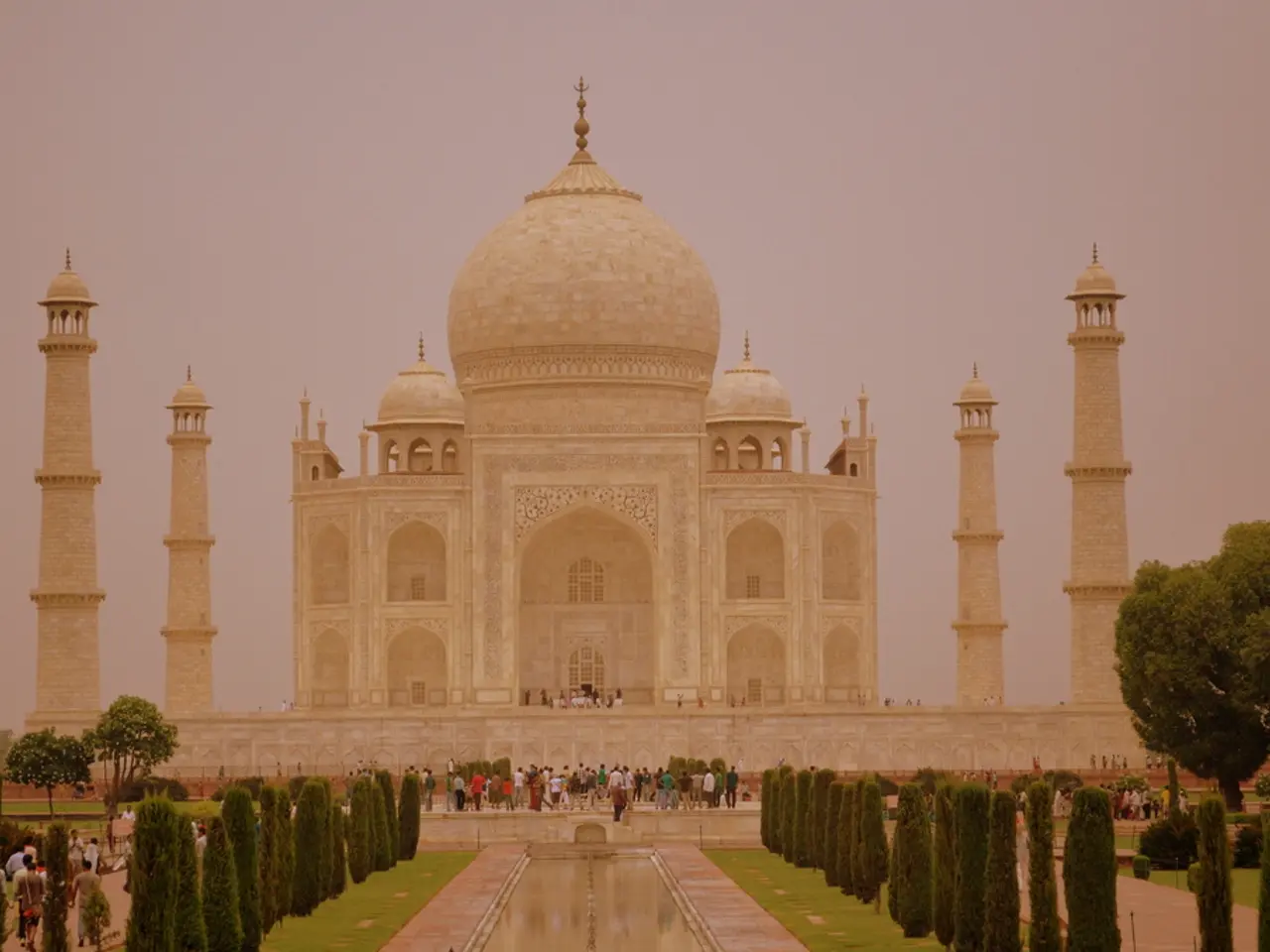Modi, India's leader, advocates for domestic independence during Independence Day celebrations.
India's Pursuit of Energy Independence: Modi's 2025 Independence Day Address
In his 79th Independence Day address, Indian Prime Minister Narendra Modi outlined a comprehensive plan to achieve energy independence for the nation. Amidst geopolitical tensions and trade disputes, Modi's vision for a self-reliant India was clear.
Modi emphasized the importance of energy independence, acknowledging India's current dependence on foreign sources but stressing the need for a change. He proposed a multi-pronged approach that encompasses diversifying energy sources, technological innovation, and securing domestic resources.
One of the key strategies involves expanding India's nuclear energy capacity. Modi announced plans to construct 10 new nuclear reactors and develop small modular reactors (SMRs). These include a 200 MWe Bharat Small Modular Reactor, a 55 MWe SMR, and a 5 MWt high temperature gas-cooled reactor aimed at hydrogen production.
The Prime Minister also highlighted the growth in renewable energy, pointing to a thirtyfold increase in solar energy capacity over the last 11 years. He emphasized the need for new hydropower dams and heavy investments in green hydrogen initiatives to support clean energy.
In addition, Modi launched the National Deep Water Exploration Mission to explore and develop domestic oil and gas reserves under the sea. This initiative aims to reduce import dependence and build a strategic buffer during the clean energy transition.
To further accelerate growth, Modi announced major reforms that open nuclear energy to private sector participation. This move is expected to combine strengths and speed up the growth in the sector.
Another significant aspect of Modi's plan is the Critical Mineral Mission. This initiative aims to explore over 1,200 sites for critical minerals essential for clean energy, defense, and advanced manufacturing. The goal is to reduce import reliance and support indigenous technology production.
Modi also emphasized the need to boost domestic production in clean tech, including electric vehicle batteries and components. This move is aimed at strengthening India's clean technology value chain and energy self-reliance.
In a notable achievement, Modi announced that India had met its target of 50% clean energy by 2025, five years ahead of the original 2030 goal. This rapid progress towards sustainable energy independence is a testament to the effectiveness of Modi's strategies.
These strategies collectively reflect a comprehensive, multi-pronged approach focused on diversifying energy sources, technological innovation, and securing domestic resources to build resilience and reduce foreign energy dependence. As India continues to navigate geopolitical challenges, Modi's vision for a self-reliant India remains a guiding light.
Meanwhile, the geopolitical landscape remains complex. Tensions with Pakistan continue, with Modi vowing not to tolerate Pakistan's "nuclear blackmail." The confrontation, triggered by a gunmen attack on mostly Hindu tourists in Indian-administered Kashmir that left 26 dead, has strained relations between the two nations.
Trade disputes with the United States also persist. Trump has threatened to impose additional tariffs on India for purchasing Russian oil, a move seen as a lifeline for Moscow's attacks. However, India has expressed readiness to support efforts to end the war in Ukraine.
As India celebrates its 79th Independence Day, the nation looks towards a future of self-reliance and a brighter future, with the vision of Prime Minister Modi at the helm. US Secretary of State Marco Rubio described relations between India and the US as "consequential and far-reaching," wishing "a brighter future for both."
- India's plan for energy independence, outlined by Prime Minister Narendra Modi, includes a strategy to reduce foreign energy dependence, as seen in his proposal for expanding nuclear energy capacity and exploring domestic oil and gas reserves.
- The media has reported on the geopolitical tensions involving India and Pakistan, as well as trade disputes with the United States, but these challenges do not appear to have deterred Modi's vision for a self-reliant India.
- In his address, Modi also emphasized the importance of technological innovation in the energy sector, such as the development of small modular reactors and green hydrogen initiatives.
- Modi's strategy for energy independence extends to the policy and legislative sphere, with announcements regarding the opening of nuclear energy to private sector participation and the Critical Mineral Mission, which aims to explore over 1,200 sites for critical minerals essential for clean energy, defense, and advanced manufacturing.
- The financial and industrial implications of Modi's plan are vast, with significant investments in renewable energy, hydropower dams, and clean tech industries such as electric vehicle batteries and components, all aimed at strengthening India's clean technology value chain and achieving energy self-reliance.




